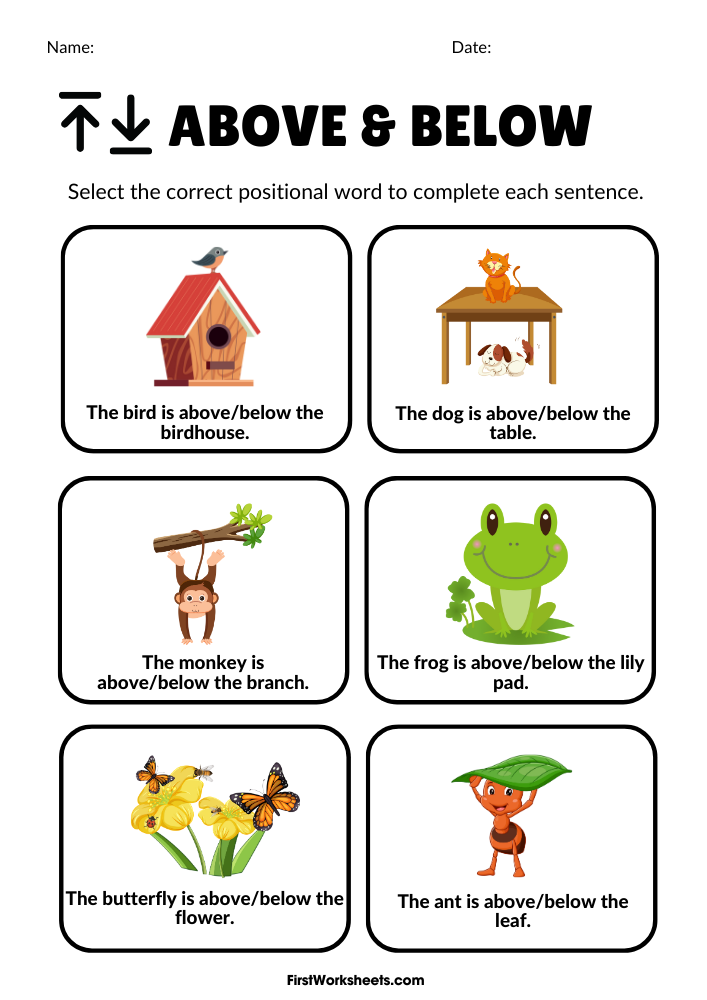Above and Below Worksheets
Above and Below Worksheets are educational tools designed to help children develop spatial awareness, understanding of positional concepts, and vocabulary related to spatial relationships. These worksheets are widely used in early childhood education and primary grades as they target foundational skills critical for math, language, and general cognitive development. Here’s an in-depth explanation:
What Are Above and Below Worksheets?
Above and Below Worksheets focus on helping children understand and identify objects, people, or places based on their position relative to each other in space. The concept revolves around teaching kids to distinguish what is “above” and what is “below” a reference point.
These worksheets often include:
- Pictures: Colorful images of objects or scenes where children identify positions (e.g., a bird above a tree, a ball below a table).
- Questions or Prompts: Written or visual prompts asking children to mark, draw, circle, or label objects that are above or below a specific reference.
- Activities: Matching exercises, sorting items into categories (above/below), or creating their own drawings based on given instructions.
Purpose of Above and Below Worksheets for Kids
- Spatial Awareness Development:
- Helps children understand spatial relationships, which is essential for navigating the world.
- Lays the groundwork for more complex spatial reasoning tasks, such as map reading and geometry.
- Building Vocabulary:
- Introduces and reinforces positional words like “above,” “below,” “over,” “under,” etc.
- Enhances communication skills by giving children the tools to describe positions accurately.
- Cognitive Development:
- Encourages logical thinking as children analyze and classify objects based on their spatial relationship.
- Strengthens problem-solving skills through exercises that require attention to detail and comprehension.
- Pre-Mathematics Skills:
- Establishes an understanding of positional concepts, which are crucial for understanding graphs, coordinates, and other mathematical representations.
- Fine Motor Skill Practice:
- Activities like drawing, circling, or writing help develop hand-eye coordination and precision in fine motor skills.
- Engagement and Fun:
- Visual and interactive elements keep children engaged, making learning enjoyable and fostering curiosity.





